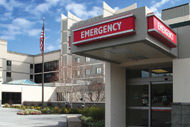White House event highlights essential role of rural telehealth
The White House and NTCA–The Rural Broadband Association hosted an event to discuss barriers around rural telehealth and action steps to overcome these challenges.
For instance, Shirley Bloomfield, NTCA CEO, says one of the discussions centered on breaking down silos to bring more telehealth services to veterans in rural communities and ideas on how to install and train veterans to use in-home equipment.
“Here at NTCA, we talk a great deal about how important rural America is to the rich fabric that makes our country truly wonderful — the food source, energy, natural resources, parks that remind us of the power of nature, home to our native American communities and certainly home to over 40 percent of those who serve our country in the military,” Bloomfield says. “Yet, when you think about where you want to live and raise a family, key elements such as access to education, social services and certain health care are right up at the top. At NTCA, we are passionate about the role that broadband can play in delivering all of these key services.”
Other stakeholders who participated in the event include the American Hospital Association, Health & Human Services, Veterans Affairs, Department of Agriculture and the Federal Communications Commission.
AHE gathers data to establish baseline ES staffing guidelines
The Association for the Healthcare Environment (AHE) of the American Hospital Association is gathering input from environmental services departments across the country to identify baseline staffing productivity standards. The results of the data gathering will be used to build staffing models and provide metrics for environmental services directors.
Patti Costello, AHE executive director, says “For environmental services departments, staffing is not only the single largest expense item in the budget, but it can also be one of the most challenging aspects of the operation to manage. They are among the most-asked topics by members of AHE, and we have undertaken a project to provide answers and solutions to address challenges.”
FDA seeks comments to improve medical device maintenance, safety
The Food and Drug Administration (FDA) is asking for information and comments from those in the medical device industry and health care community who refurbish, recondition, rebuild, remarket, remanufacture, service and repair medical devices to improve medical device safety. The FDA “is taking this action, in part, because various stakeholders have expressed concerns about the quality, safety and continued effectiveness of medical devices that have been subject to one or more of these activities that are performed by both original equipment manufacturers and third parties, including health care establishments.”
Study: Hospital air a potential route for transmission of β-lactam–resistant bacteria
A study published in the American Journal of Infection Control collected 64 air samples from four hospital wards. Prevalence of β-lactam–resistant bacteria (BLRB) in the samples ranged from 3 to 34 percent, revealing that hospital air is a potential route of transmission of BLRB, such as Acinetobacter and Staphylococcus. Researchers say the results warrant developing improved infection control measures to stop the spread of airborne bacteria.
Report: Nations improve radiological security, but gaps remain
Governments and the private sector should develop a more effective system for securing radiological sources and accelerate work to replace radiological materials in medicine and other sectors with alternative technologies where feasible, according to a report released yesterday by the Nuclear Threat Initiative, a nonprofit organization founded by Ted Turner and Sam Nunn.
“This is the case particularly for the use of one of the most dangerous isotopes, cesium-137, which is used primarily in medical equipment,” the report states. “X-ray technology, which does not require the use of radioactive sources, is the most common and widely available alternative to cesium-137 used in blood irradiation. All hospitals should replace these irradiators to reduce risk and potential liability if the radiological sources are stolen.”
FDA recommends against using OxySure portable emergency oxygen system
The Food and Drug Administration has determined that OxySure Therapeutics Inc.’s June 2015 recall of replacement cartridges for its portable emergency oxygen system Model 615 was ineffective, and is recommending that consumers stop using it because of several device malfunctions, including ineffective oxygen delivery and chemical reactions in the canisters that could cause them to explode.





